The suicidal pilot who flew jet into French Alps, ki*ling all 150 on board… because he feared his career was going to end
Marina Bandres and her seven-month-old son, Julian, were in a hurry to return home to their lives in Manchester on March 24, 2015.
The pair had left the country for the weekend to attend a funeral in Spain. Unable to return directly, they rearranged to fly back via Dusseldorf – a chance decision that put them among 150 passengers and crew on board the doomed Flight 9525.
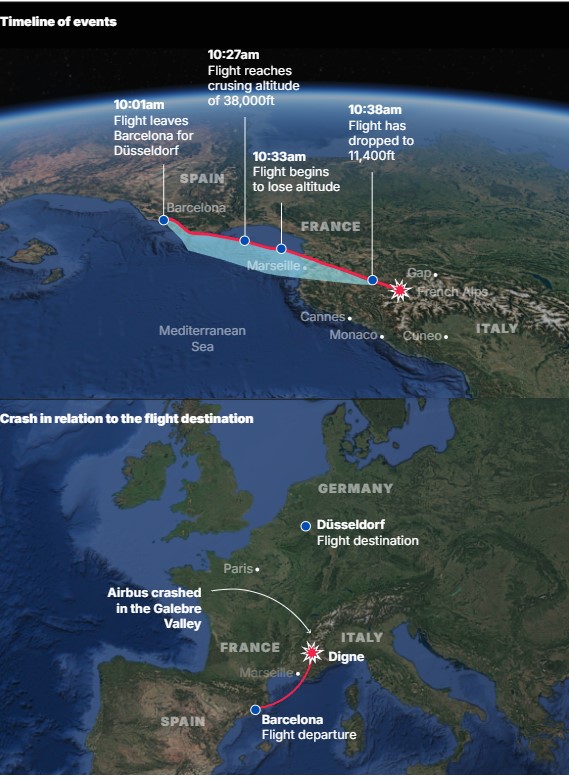
The plane departed in the morning from Barcelona and was supposed to land two hours later in Germany. But it never arrived because, investigators said, the plane was deliberately downed by 28-year-old co-pilot Andreas Lubitz.
Infant Julian was among three Brits on board the Airbus A320 as it passed by Digne in France and crossed through the Alps. In the space of just 13 minutes, the plane dropped 34,000ft before crashing into a mountain at 345mph, killing all on board.
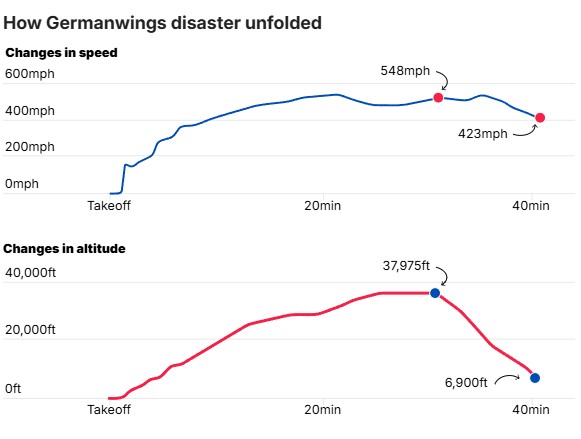
Prosecutors said those on board would not have realised what was happening until the final moments. Death would have been instantaneous.
Marina’s husband, Pawel Pracz, said his wife had bought tickets back from her uncle’s funeral at the ‘last moment’ as she ‘wanted to return to her daily routine as soon as possible’. He was ‘devastated’ by the news, he said.
Today, hundreds of families will be commemorating the 10th anniversary of the downing of Flight 9525 with their own personal traditions. Their losses remain incomprehensible. The material question lingers: How was this able to happen?
A decade on, prosecutors believe that the co-pilot, suffering from mental illness, was ‘obsessed’ with an ‘unfounded fear’ of his career collapsing. Having researched other ways to die, he chose to end his life – and those on board – with the ‘instrument’ he had ‘mastered’ because he considered it ‘safe’.

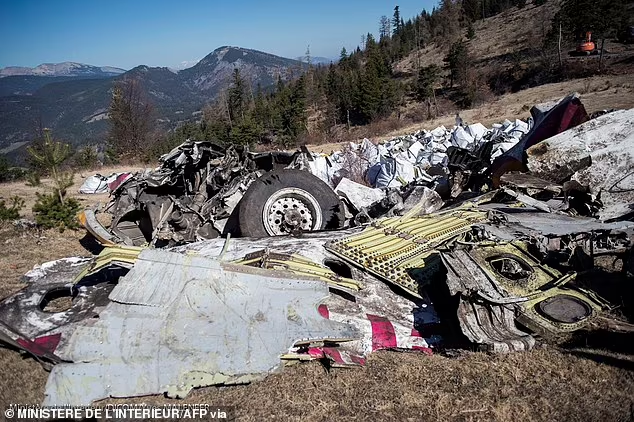
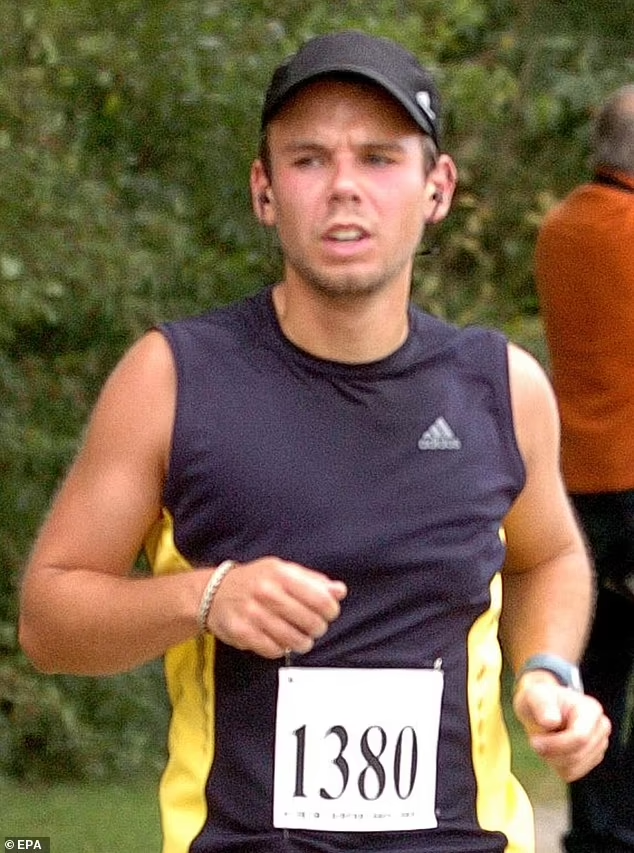

At a high school in Haltern, Germany, students were preparing this morning to mark the anniversary of the crash by laying down white roses for the victims at 10:41am, the moment of the crash.
The church bells were set to ring out, casting a sombre mood over the town of 38,000 as they remembered 16 students and two teachers killed in the crash while returning from an exchange trip to Spain.
‘There was hardly a family that wasn’t affected somewhere in their circle of friends or relatives,’ the high school’s principal, Christian Krahl, told German news agency dpa.
Also killed were two babies, a pair of acclaimed German opera singers and a member of an Argentine rock band, three generations of the same family, a vacationing mother and son, a recently married couple, people on business trips and others going home.
One hundred and fifty people died in the crash on March 24, 2015. Hundreds of families and communities were ripped open that morning, leaving wounds never to heal.
Adding confusion and disbelief to the tragedy, investigators revealed in the days after the crash that co-pilot Andreas Lubitz had locked the flight’s captain out of the cockpit to deliberately set the plane on a collision course with a mountainside.
It emerged that Lubitz had suffered from depression in the past, but was later deemed fit to fly. He had searched online for ways to end his life, before researching the security of cockpit doors.
As prosecutors dug deeper into what had happened, they found that the pilot had suffered from a ‘severe’ depressive episode before being hired – something the airline were not informed of.
Just weeks before the crash, a psychiatrist diagnosed a psychosomatic disorder and possible psychosis, but Lubitz hid his sick notes.
Prosecutors believed he became ‘virtually obsessed’ with an ‘unfounded’ fear of losing his vision – a condition that would surely end his career as a pilot.
All of this led them to conclude that Lubitz had deliberately cast the plane down into the mountains in a deliberate attempt to end his own life.



The Airbus A320 took off from Barcelona’s El Prat at 10am local time (9am GMT) on March 24 as scheduled.
It climbed to about 38,000ft (11,600m) in its ascent over the Mediterranean and into France before making its final routine contact with ATC around 9:30am.
But seconds later, the selected altitude was changed from 38,000ft to just 100ft. The plane began to descend, quickly.
With the descent, the plane’s speed increased as it passed by Digne in the south of France.
Ground crews, noticing the change, contacted the plane several times but heard nothing back.
Seven minutes later, the plane crashed into the side of a mountain near Seyne-les-Alpes, killing all on board.
One local spoke of hearing an explosion ‘like dynamite’ while another said he had seen the plane flying far too low.
Sebastien Giroux said: ‘There was no smoke or particular sound or sign of anything wrong, but at the altitude it was flying it was clearly not going to make it over the mountains.
‘I didn’t see anything wrong with the plane, but it was too low. I didn’t see much, perhaps for two or three seconds… it seemed it was going down.’

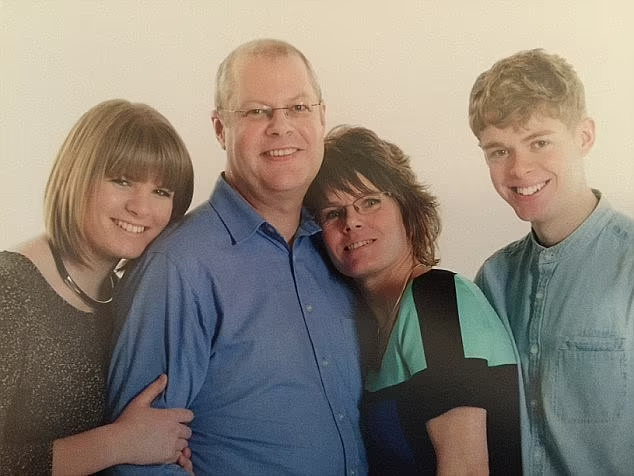

Rumours immediately swirled as to what could have happened. Contemporary reports speculated that the pilots may have suddenly fallen unconscious.
Some quoted aviation sources in saying the pilots had issued Mayday distress signals. Civil aviation authorities later denied the reports.
In the days after the crash, search teams combed the treacherous mountainsides to recover the plane’s black boxes.
The contents of the recorders, it was hoped, would help investigators to piece together the plane’s final moments and make better sense of how the tragedy came to pass.
Teams rappelling off helicopters and scaling barren slopes found debris and human remains before they retrieved the black boxes.
What they found was ‘possibly the worst nightmare that anyone could have in our company’, Lufthansa boss Carsten Spohr said at the time. ‘We are in a state of shock. We’re horrified.’
The information held within led investigators to conclude that 28-year-old Lubitz had deliberately locked the pilot out of the cockpit and intentionally crashed.
French prosecutor Brice Robin said that Lubitz used the flight managing system to put the plane into a descent, something that can only be done manually and deliberately.
He said: ‘The intention was to destroy the plane. Death was instant. The plane hit the mountain at 700km per hour.
‘I don’t think that the passengers realised what was happening until the last moments because on the recording you only hear the screams in the final seconds’.
